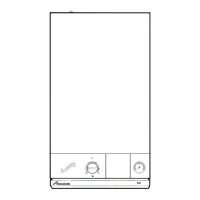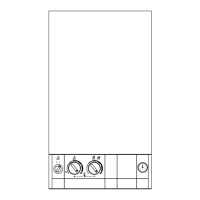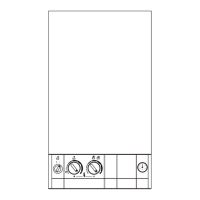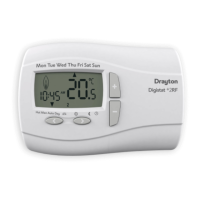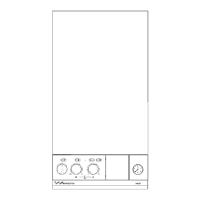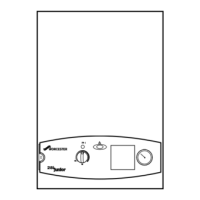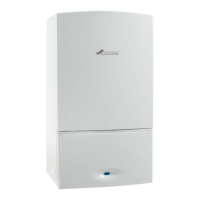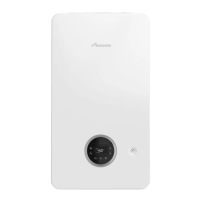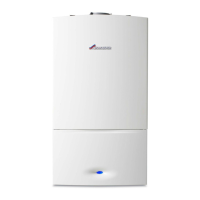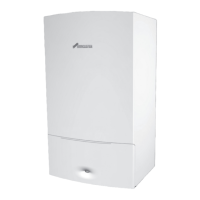4
Hot Water and Central Heating mode:
When a demand is made for heating by the system controls (i.e. a
programmer or room thermostat). the pump will energise circulating
primary water around the heating system and the burner will light.
The heat output from the appliance in this mode has been factory set
to maximum. The appliance will operate as necessary to maintain the
temperature of the radiators at the level set by the adjustment of the
Heating Temperature Control Knob. (See Fig. 3.)
If the system no longer requires output to maintain the desired
room temperature, the burner will extinguish. The pump will
continue to run for a short
period to dissipate the
residual heat from the
appliance and then switch off.
The pump will run for
the duration of the demand
and only shut off if the room
thermostat or programmer is
satisfied.
The appliance will supply
heat to the central heating
system as required. A demand
for hot water at a tap or
shower will override the
central heating function for
the period of the domestic hot
water demand.
NOTE: If in doubt about
the use of the controls ask
your installer to assist you.
Fig. 1. Appliance Water Flow Diagram.
Secondary Heat
Exchanger
Automatic
Air Vent
Circulating
Pump
Water To Water
Heat Exchanger
Water Diverter
Valve
Pressure Relief
Valve
Condensate
Drain
Safety
Relief
CH
Return
CH
Flow
Domestic Cold
Water Supply
Domestic Hot
Water Out
Gas To Water
Heat Exchanger
Boiler
Expansion
Vessel

